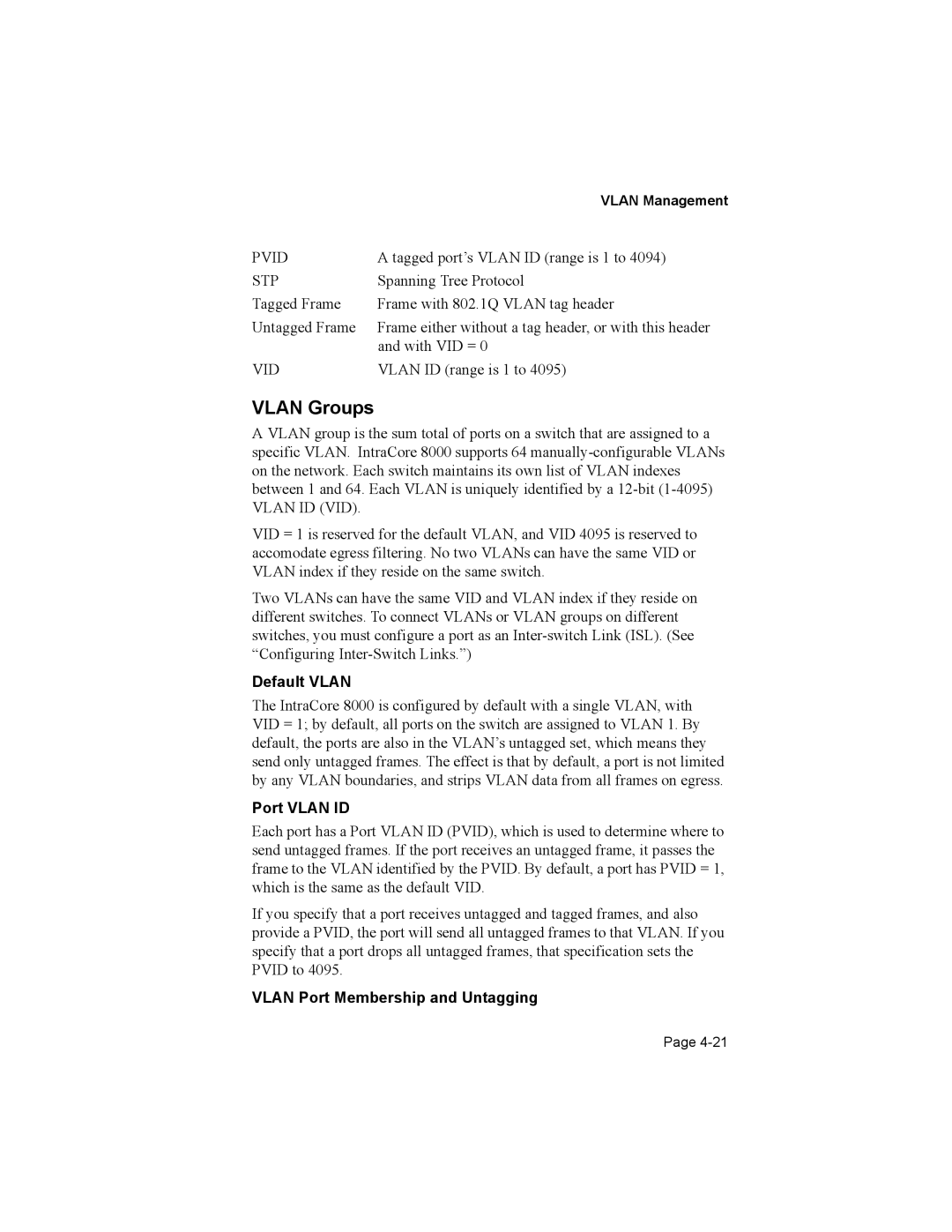| VLAN Management |
PVID | A tagged port’s VLAN ID (range is 1 to 4094) |
STP | Spanning Tree Protocol |
Tagged Frame | Frame with 802.1Q VLAN tag header |
Untagged Frame | Frame either without a tag header, or with this header |
| and with VID = 0 |
VID | VLAN ID (range is 1 to 4095) |
VLAN Groups
A VLAN group is the sum total of ports on a switch that are assigned to a specific VLAN. IntraCore 8000 supports 64
VID = 1 is reserved for the default VLAN, and VID 4095 is reserved to accomodate egress filtering. No two VLANs can have the same VID or VLAN index if they reside on the same switch.
Two VLANs can have the same VID and VLAN index if they reside on different switches. To connect VLANs or VLAN groups on different switches, you must configure a port as an
Default VLAN
The IntraCore 8000 is configured by default with a single VLAN, with VID = 1; by default, all ports on the switch are assigned to VLAN 1. By default, the ports are also in the VLAN’s untagged set, which means they send only untagged frames. The effect is that by default, a port is not limited by any VLAN boundaries, and strips VLAN data from all frames on egress.
Port VLAN ID
Each port has a Port VLAN ID (PVID), which is used to determine where to send untagged frames. If the port receives an untagged frame, it passes the frame to the VLAN identified by the PVID. By default, a port has PVID = 1, which is the same as the default VID.
If you specify that a port receives untagged and tagged frames, and also provide a PVID, the port will send all untagged frames to that VLAN. If you specify that a port drops all untagged frames, that specification sets the PVID to 4095.
VLAN Port Membership and Untagging
Page
